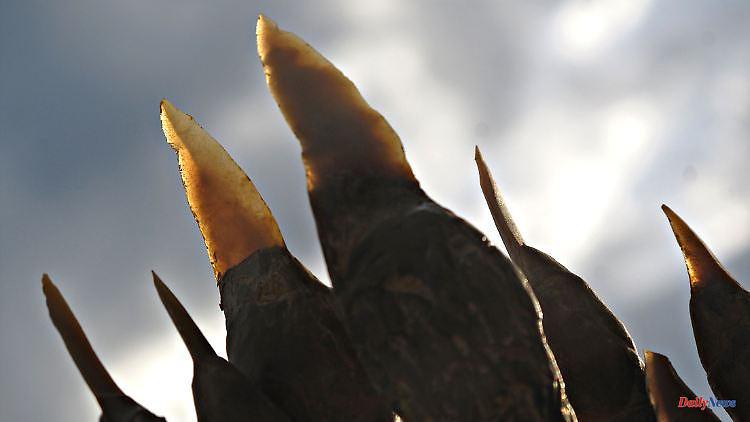According to a research team, modern humans reached Europe earlier than long thought - and therefore already had highly developed weapons with them. Stone spikes found in a cave in southern France suggest the use of a bow and arrow, a study has found. But there are also doubts.
According to a study, modern man not only reached Europe much earlier than previously thought, but also armed with what was then the most modern technology. As early as 54,000 years ago, Homo sapiens used a bow and arrow on their first advance on the continent, writes an international research team in the journal Science Advances. The group bases the spectacular claim on finds in a cave in southern France's Rhone Valley. This would be the earliest evidence of this weapon being used outside of Africa. However, independent experts are cautious about the interpretation.
A year ago, a team led by Ludovic Slimak from the French Center National de la Recherche Scientifique (CNRS) wrote in the same journal that modern humans had reached Europe - which was then inhabited by Neanderthals - 54,000 years ago. That would be about 10,000 years earlier than previously known. The surprising finding is based on what the researchers believe to be a human tooth relic that the team discovered in the mandrin cave near Montélimar. However, the team used the appearance of the tooth as a guide, not a DNA analysis.
Now Slimak is following suit: Because the tooth find layer also contained hundreds of stone scrapers, blades and above all -points, many of them with clear signs of wear. The researchers classify the particularly small stone points with a width of less than one centimeter as arrowheads - otherwise there is no point in using such tiny utensils.
"The production of the stone artefacts in the stylet layer E was directed towards standardized small points," the authors write. They point out that this is the oldest evidence of arrowheads in Eurasia. Even older are stone tip finds from South Africa, which are dated to be around 64,000 years old.
"An arrow, while more difficult to make, is extremely fast, useful at great ranges (up to 100 meters), and easily transportable in a quiver," the team writes. "Earliest human immigration into Neanderthal territory is associated with mastery of the bow." Since the superior technology was not known to the Neanderthals, it helped modern humans spread to the new continent. Meanwhile, the question remains as to why the Neanderthals did not adopt this beneficial technology.
New York University's Radu Iovita views the study with skepticism. "The authors promise a spectacular statement about the earliest Homo sapiens in Western Europe," emphasizes the expert. Although the find layer actually contained many broken tips, it was unclear whether these were really shot with a bow and arrow.
João Marreiros from the Leibniz Center for Archeology (LEIZA) in Neuwied finds the statement that modern humans reached Europe 54,000 years ago amazing. "If Homo sapiens was actually in Mandrin at that time, there is a gap of about 10,000 years and thousands of kilometers until we have another place in Europe that was inhabited by H. sapiens," explains the expert. He refers to the Bacho Kiro Cave in Bulgaria, where there is evidence of people staying around 45,000 years ago. It was only from this time that references to Homo sapiens began to accumulate in Europe.
Even if people had sporadically advanced to Europe before that, one would expect further sites, says Marreiros. "I think you have to find more pieces of the puzzle to reconstruct these 10,000 years of our history."
Nonetheless, the technology found in stylets differed markedly from that of the Neanderthals - the tools for cutting, scraping and possibly shooting were much more specialized than the comparatively simple implements of Neanderthals. Marreiros does not find it surprising that modern people - if they were actually in Europe at that time - used bows and arrows. It is very likely that this weapon was already part of the repertoire of Homo sapiens in Africa.












